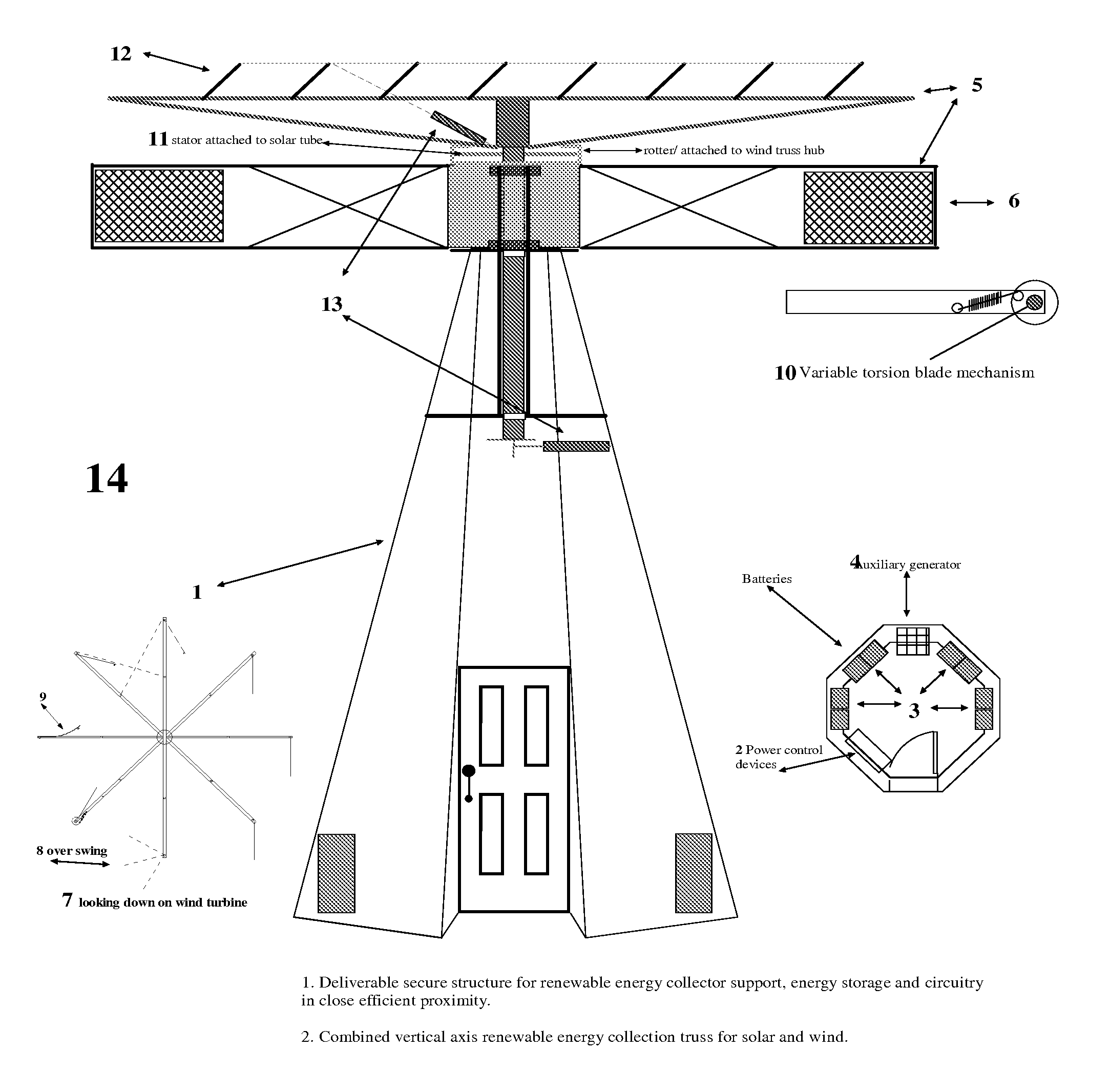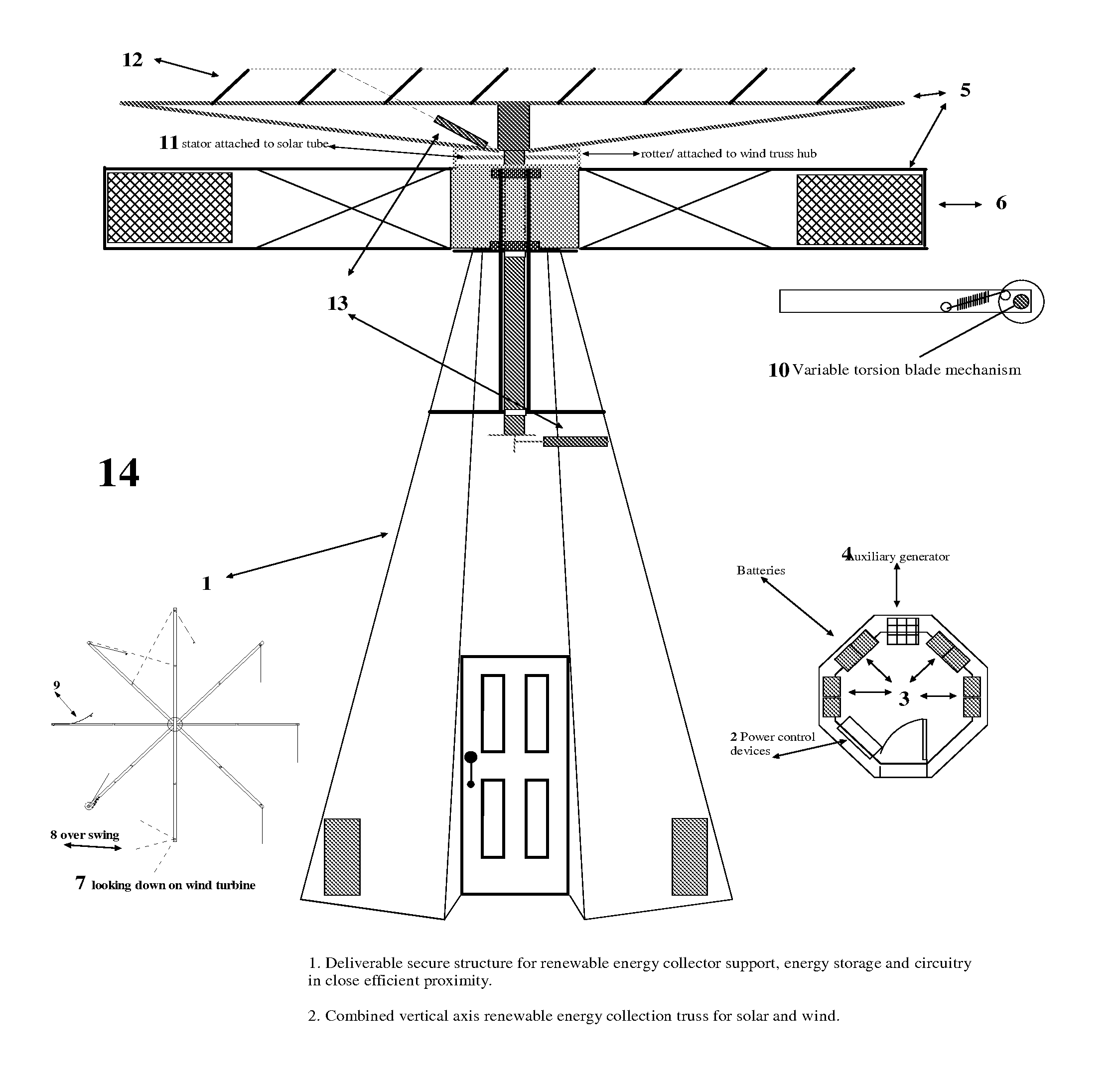Renewable Energy Appliance
a renewable energy and appliance technology, applied in renewable energy generation, renewable energy generation, wind turbines with solar radiation, etc., can solve the problems of large loss of energy, unfavorable wildlife, noisy and undesirable to the general public, etc., and achieve the effect of reducing noise, increasing windmill torque, and reducing nois
- Summary
- Abstract
- Description
- Claims
- Application Information
AI Technical Summary
Benefits of technology
Problems solved by technology
Method used
Image
Examples
Embodiment Construction
[0025]The modular code compliant, energy appliance consists of an attractive enclosed, structural support assembly for placement of energy production collectors, storage and supporting circuitry. The size and shape of the structure reduce the effects of horizontal wind forces on the appliance; this, coupled with a low center of gravity, results in reducing the minimal requirements for site preparation for footings or foundation. It provides for safe, efficient enclosed placement of power management components in close proximity, improving efficiency and sharing common electrical control circuitry, thus reducing power loss from long distance conductors on the low voltage side. Separate vented enclosures protect hazardous batteries and gasses from possible human or mechanical contact while improving access and safety for servicing. Location of circuitry and energy storage, aid and assist temperature control of circuits and storage batteries, improving efficiency. It provides for place...
PUM
 Login to View More
Login to View More Abstract
Description
Claims
Application Information
 Login to View More
Login to View More - R&D
- Intellectual Property
- Life Sciences
- Materials
- Tech Scout
- Unparalleled Data Quality
- Higher Quality Content
- 60% Fewer Hallucinations
Browse by: Latest US Patents, China's latest patents, Technical Efficacy Thesaurus, Application Domain, Technology Topic, Popular Technical Reports.
© 2025 PatSnap. All rights reserved.Legal|Privacy policy|Modern Slavery Act Transparency Statement|Sitemap|About US| Contact US: help@patsnap.com


